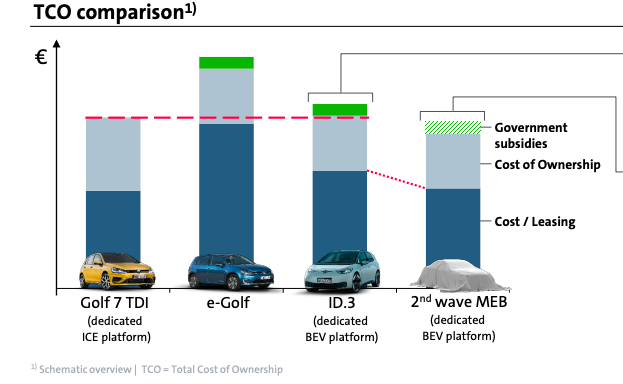According to Volkswagen, the first wave of MEB-models will be slightly more expensive than ICE counterparts.
Volkswagen Group‘s comparison of the total cost of ownership (TCO) of internal combustion engine cars (ICE) and battery electric cars (BEV) reveals interesting things.
As we can see in the image, the MEB-based models will be slightly more expensive than ICE counterpart (Volkswagen ID.3 and Golf for example), but thanks to lower energy/maintenance cost it might be similar (or equal after deducting incentives). That was not the case for previous BEVs like the Volkswagen e-Golf.
Despite all the efforts Volkswagen made to bring EVs to the masses through the MEB platform, the German manufacturer is not even trying to say that the mainstream models will get equal TCO. It seems we are not yet there today.
The great thing is that the difference is now much lower than a few years ago:

As industry analyst Matthias Schmidt (schmidtmatthias.de) points out, the true initial cost parity (at least in the mainstream segment) is expected several years down the road, when Volkswagen introduces the 2nd wave of MEB models, probably with less expensive battery cells and other improvements.
When that will happen, the total cost of ownership should be equal to ICE without subsidies (hopefully noticeable lower). Subsidies (if applied) might makes BEVs very attractive, but there will be no point to keep them.
In premium/luxury segments, the TCO parity might be widely reached years before the mainstream segment. We guess that the last to achieve cost parity will be the entry-level segment (small, budget cars).
